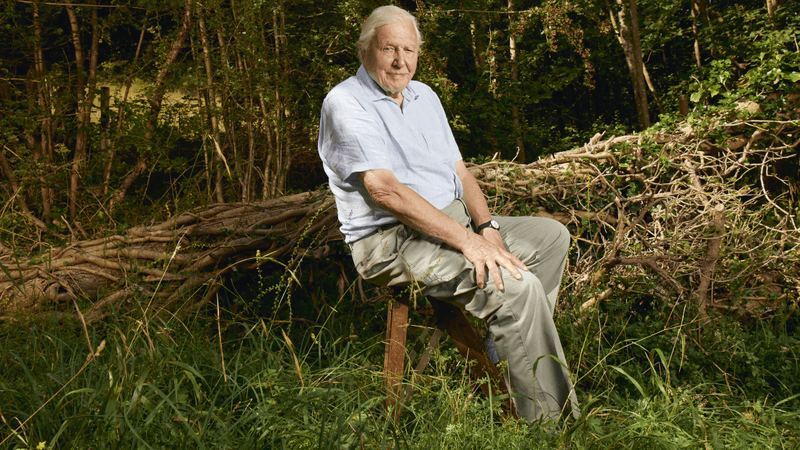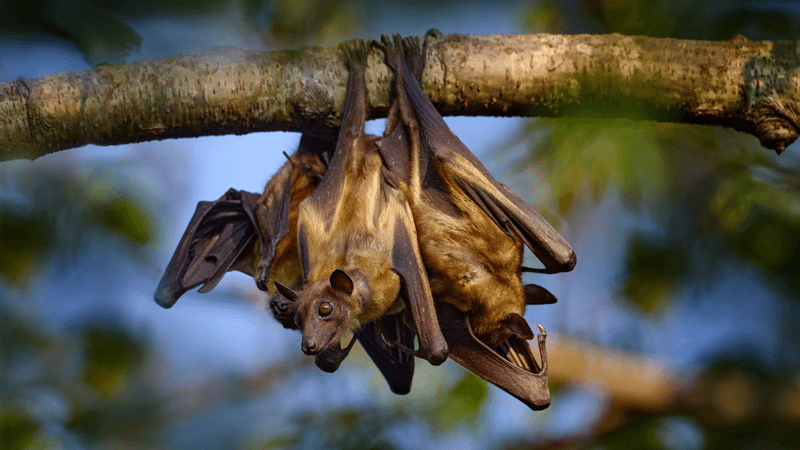Planet Earth is back for a third series as David Attenborough and the BBC Natural History Unit combine to tell the stories of some of Earth’s most intriguing species, spectacular landscapes, and the curious science behind it all. Filmed over the course of five years, Planet Earth III employed the help of drones, highspeed cameras, and deep-sea remote-operated vehicles (ROVs) in its quest for wildlife and behaviors that have never before been captured on camera.
In episode eight, Heroes, we see the rarest star of the series: a Morona-Santiago Harlequin Frog (Atelopus halihelos) of which there are no more than 49 individuals left. According to the series producer, Matt Brandon, one of the “Heroes” behind the story is “a slightly eccentric scientist who fell in love with frogs when he was seven years old” and now cares for a frog he named Sad Santiago, an individual that’s “possibly the loneliest frog in the world”.
The scientist "sets out with his very tolerant and long-suffering partner to try and collect a female for Sad Santiago,” explained Brandon during a press conference. “They do find a female and they bring it back to the facility, and there is indeed now a breeding population.”
“The human side of this is fascinating as well,” added executive producer Mike Gunton. "Because there's a great moment where they have to go to collect these frogs from basically one of the wettest places in the world and it's the rainy season. So, it's basically it's like being in a washing machine all the time. And she's standing there, I think the director said what's it like being in a relationship with them? And she says, ‘It's unusual’.”
Planet Earth III really shines a light on what it takes to be a scientist sometimes. In the case of two eco-warrior women in Europe, that means dressing up as birds and hopping in a microlight.
“Our final episode is dedicated to, and focuses on, what we like to call ‘the ordinary people’, but they’re not – they’re really extraordinary people who go to extraordinary lengths to look after the natural world and the wildlife that lives on our planet,” continued Brandon. “Bald ibis were extinct in Europe about 400 years ago, and some of them remain in zoos.”
“What [these two women] do is, they have a project which takes eggs, collects the eggs from zoos, and they dress up in yellow and become foster mothers. They’re there from the moment the eggs hatch, and they feed them, they put nappies on them, they wipe their bottoms. They do everything[…] but bald ibis can't survive unless they migrate, so they have to learn to migrate over the Alps. The only way that they can do that is to teach them to fly and teach them how to find the thermals. And they do that in nail-biting fashion by going up in microlights – it’s pretty exceptional."

It’s a great insight into the behind-the-scenes hardship that goes into conserving species in the wild, but catching it on camera is no mean feat either. It took 1,904 days of filming to put Planet Earth III together, and as Brandon explained in a press release, the teams tackled a lot in that time.
“This included … weeks spent in hides on the freezing plains of the Eurasian Steppe where temperatures drop to minus 30 degrees Celsius; nearly a month in the caustic waters of Mexico’s Yucatan peninsula to produce a stunning new story about a nesting flamingo colony; trekking for two days through the Vietnamese jungle with 500 kgs [1,102 pounds]of equipment to reach the world’s largest natural cave, Hang son Doong, where the team then lived for 18 days underground (longer than anyone has ever spent in the cave before); and filming two miles below the surface of the sea using a deep sea submersible to reveal the first broadcast footage of the largest known gathering of octopus in the world.”
Of course, it just wouldn’t be Planet Earth without a few wise words from the face of natural history filmmaking, Sir David Attenborough. This season, we see him on location at Downe Bank, a place in Kent, UK, that was special to none other than Charles Darwin.
“In this new series of Planet Earth we travel to the most astonishing wild places, see mysterious creatures, witness rare, spectacular wonders, and reveal breath-taking animal dramas. The natural world continues to surprise us, but since Darwin’s time it has changed beyond recognition, being transformed by a powerful force – us. We will see how animals are adapting in extraordinary ways, to survive the new challenges they face. At this crucial time in our history, we must now look at the world through a new lens.”
Planet Earth III will begin on BBC One and iPlayer at 6.15 pm BST on Sunday, October 22.




